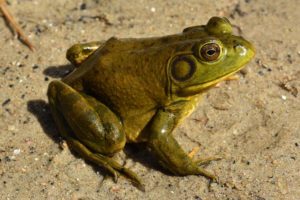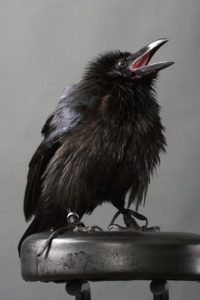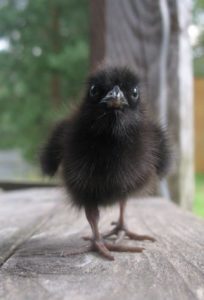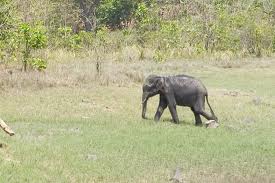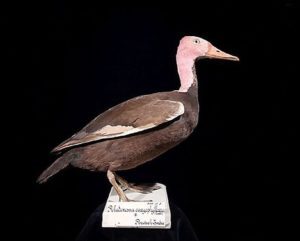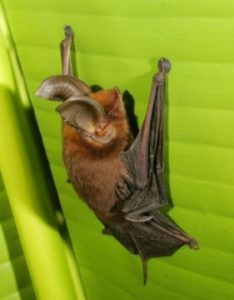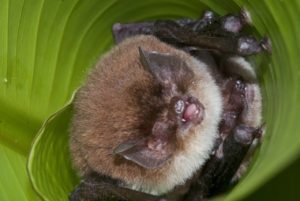Podcast: Play in new window | Download (Duration: 18:32 — 18.8MB)
Subscribe: | More
Let’s get gross and horrible this week! Are there any bugs with so much venom they could kill you? What would happen if you ate 5,000 moth digestive tracts? Why am I even talking about this stuff? Listen and find out! Thanks to Grady and Tania for today’s topic suggestions!
The giant silkworm moth caterpillar. Do not touch. No seriously, don’t! You might d i e
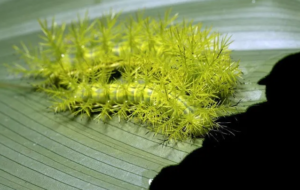
The southern flannel moth and its larva, a puss caterpillar. Fuzzy, yes, but don’t pet the caterpillar:
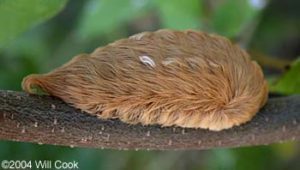
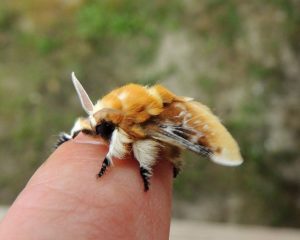
A luna moth and its caterpillar. It will not kill you:
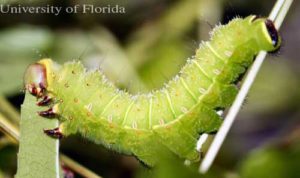
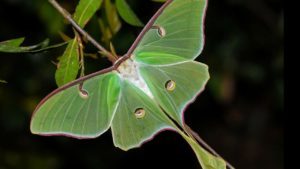
A bullet ant. Look at those chompers!
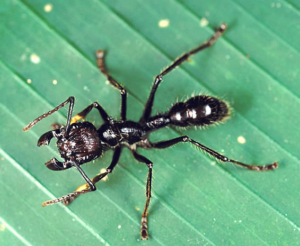
The white-spotted assassin bug. At least you can see it coming:
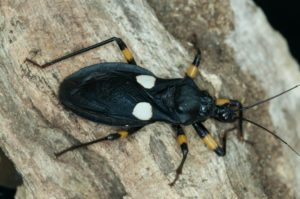
Show transcript:
Welcome to Strange Animals Podcast. I’m your host, Kate Shaw.
This week’s episode is a suggestion from Grady, who also sent several other really good suggestions we’ll hopefully get to soon. The one we’re looking at this week is poisonous bugs! And because another listener, Tania, suggested we cover moths, we’ll also make sure to talk about a lot of poisonous or venomous moths too.
Technically, if an insect is poisonous that means it will make you sick if you eat it. If an insect bites or stings you and it injects poison into the wound, it’s referred to as venomous. But you can call both poisonous because everyone will know what you mean. Also, you would probably get sick if you ate a venomous bug too, now that I think about it.
You might think I’m joking when I talk about eating bugs, but in many parts of the world people do. If you think about it, it’s no weirder than eating shrimp, lobster, oysters, or eggs. Remember that humans are omnivores, and that means we will eat just about anything. Those things don’t all have to be cookies and peanut butter sandwiches, although I haven’t had my lunch yet and if I had to choose between a PB&J with maybe a couple of Thin Mints afterwards, I’d choose that over a big bowl of deep-fried crickets. But lots of people would choose the crickets. It all depends on what you’re used to and what’s considered acceptable in your culture.
But even in areas where people eat lots of insects, they don’t eat every kind of insect. Some really are poisonous because they eat plants that contain toxins and store those toxins in the body. The monarch butterfly caterpillar eats milkweed, which contains poisons that can harm the heart, so don’t eat monarch butterflies. But because insects are generally quite small, the toxins one insect can hold aren’t usually enough to make you really sick unless you eat a whole bunch of them. That’s why children in some parts of Italy can eat a particular moth without dying even though it contains the deadly poison cyanide.
You know what? Let’s start with this moth, because what the heck, Italian children. Why are you eating these moths anyway, and why are you not dying of cyanide poisoning?
There are a number of closely related moth species that children in the Carnia region of Italy traditionally eat. The moth’s wingspan is only about an inch wide, or 30 millimeters. It’s most common in the Italian Alps and it flies around during the day, which makes it easy to find and catch. Its body is grayish, and one pair of its wings are greenish or gray with red spots, while the other pair of wings is mostly red. There’s also a variety with yellow wing markings instead of red. The reason it has such bright colors is because it stores a liquid containing cyanide in its digestive system, and the bright colors tell potential predators to leave it alone, it’s poisonous.
The problem is, the moth’s digestive system also contains sugars called glucosides, which makes it taste sweet. And before you laugh at little Italian children catching moths to eat because they’re sweet-tasting, think about how much effort you may have put into extracting a tiny bead of nectar from honeysuckle blossoms.
But honeysuckle doesn’t contain cyanide. Why don’t those little moth-eating kids get sick?
Researchers have studied this, mostly because they were worried about the children. It turns out that there’s so little cyanide in each moth that even a small child would have to eat at least 170 moths whole in a short period of time to die. Since most of the time the kids pull the moths apart and only eat the tiny piece of the digestive tract that contains sugar, that reduces the amount of cyanide they ingest. A kid would have to eat 5,000 moth digestive tracts to die, and frankly if a kid was that determined to have that much sugar, they’d probably be more likely to spend their time doing odd jobs for money to buy candy instead of catching thousands of moths.
Well, that was gross. I feel like we’re off to a really good start in this episode.
So, eating 5,000 moth digestive tracts aside, are there any bugs out there that are so venomous that they could kill you?
Yes there are. But you’re probably not going to run across them, and even if you do, you’re probably going to be just fine. It’s rare that someone dies after touching Lonomia moth caterpillars, although it does happen. But if you do touch one of the caterpillars, even if you don’t die, you’re not going to feel very good.
There are a number of Lonomia species. The adult moths are brown or grayish, with the males sometimes yellow. It has delicate darker brown markings to help it mimic small dead leaves. The species that is most venomous is sometimes called the giant silkworm moth, Lonomia obliqua, and it lives in South America. It’s especially well known in southern Brazil. The caterpillar grows to about two inches long, or 5.5 cm, and is either green or brown with lots of hair-like spines growing from the back and sides.
A lot of caterpillars have these hair-like spines, and most of them aren’t venomous. They can cause a rash, though, since the spines are very thin, detach easily, and can irritate the skin. But the caterpillar of the giant silkworm moth has spines with powerful venom. The venom contains an anti-clotting agent that causes internal bleeding that can eventually lead to death. But one little caterpillar doesn’t contain enough venom to kill a person all by itself. The trouble comes when the caterpillars are gathered in groups on leaves or tree trunks, because then it’s easier for someone to accidentally touch a bunch of caterpillars at once, receiving hundreds or even thousands of tiny stings from the venomous hairs. Fortunately, the mortality rate for people who are stung by these caterpillars is only a little over 2%. That means almost 98% of people stung by one survive.
Another moth with a venomous caterpillar lives in the United States, especially the southeastern states. It’s called the southern flannel moth and it’s really pretty and fuzzy, yellow and white with some brown markings. The caterpillar is often called the puss caterpillar because it’s also fuzzy and somewhat resembles the end of a cat’s tail or a cat’s paw. But don’t touch it! The puss caterpillar has spines with venom sacs at the base just like the giant silkworm moth caterpillar has. If someone brushes against the spines, they inject venom into the skin. The puss caterpillar isn’t deadly, and most people who touch it only end up with a painful swelling at the injection site that feels like an extra bad bee sting. But some people have a more severe reaction, including fever, vomiting, and heart trouble.
Incidentally, in case you were wondering if caterpillars poop, of course they do. Some caterpillars, though, including the puss caterpillar, actually eject fecal pellets so that they fly away like tiny bullets of poop. This is partly so the caterpillar doesn’t make a mess on the leaf it’s eating, but mainly so that predators aren’t able to find the caterpillar after seeing or smelling its poop. But sometimes the puss caterpillar will fire fecal pellets at predators, so that’s yet another reason not to touch one.
Puss caterpillars build really tough cocoons, so tough that they can stay on a tree or bush for years after the moth is long gone. Some ant species actually move into puss caterpillar cocoons to raise their eggs. Spiders also sometimes live inside empty puss caterpillar cocoons.
There are other venomous moth caterpillars, but they’re all pretty similar to the ones we’ve discussed already. But while we’re on the subject of moths, let’s talk about just how amazing and weird they are. This goes for butterflies too, of course, which are very similar.
As an example, let’s discuss a type of moth that isn’t venomous or poisonous or dangerous in any way, the luna moth.
The luna moth is one of the largest moths in North America, and it’s fairly common in the eastern part of the continent. It’s beautiful, with pale green wings and a white body. Its wingspan can be as much as seven inches across, or 18 cm. The wings have yellow eyespots and long swallowtails that confuse bats’ echolocation by fluttering as the moth flies, scattering the reflections of the bat’s echolocation calls. The bat attacks the swallowtail instead of the moth’s body, allowing the moth to fly away.
This is the life cycle of the luna moth, which is similar to most moths’ life cycles. A female moth will lay several hundred eggs on the undersides of leaves the caterpillars will eat, usually only one or a few eggs per leaf spread across many trees. The luna moth caterpillar especially likes persimmon, sweet gum, wild cherry, hickory, willow, black walnut, and white birch trees. The eggs hatch into little green caterpillars after about a week. The caterpillars eat leaves, grow big enough to molt, eat and grow some more, molt again, and so on. The period between molts is called an instar, which in the luna moth is about a week, give or take. After five instars, the caterpillar is as big as it will get, generally around 3 ½ inches long, or 9 cm. It’s not dangerous, but if a predator approaches, it will rear up, clack its mandibles, and puke up the contents of its digestive system, which stinks.
Finally, the caterpillar leaves the tree where it’s lived its whole life and crawls around in the leaf litter underneath the tree. There it spins a cocoon out of silk, wrapped inside leaves to hide it, expels any water or food still in its intestines, and transforms within the cocoon into a pupa. The pupal stage takes about two or three weeks, and let’s find out what’s going on inside the cocoon during that time.
First, the pupa is encased in a sort of exoskeleton called a chrysalis, which is inside the cocoon. Within the chrysalis, the caterpillar’s body starts to digest itself using its own digestive juices. This breaks its body down into cells in a sort of soup inside the chrysalis, and the cells then reform into the adult moth or butterfly.
Clearly, if you go through a metamorphosis like this that requires all your cells to turn into cell soup, you aren’t going to retain any memories from before you ensouped. Right? Well, according to a 2008 study with a moth called the tobacco hornworm, caterpillars that learned to avoid a particular odor retained those memories as full-grown moths. The moths would also avoid that odor. Researchers aren’t sure how this happens and I wasn’t able to find any follow-up studies, but it’s pretty mind-blowing. My brother sent this article to me ages ago, so thanks, Richard!
So, the luna moth has developed from a caterpillar into caterpillar soup and then into a newly-formed luna moth. The moth has serrated spurs made of chitin at the base of the front wings, which it uses to tear its way out of the cocoon. Its new wings are soft and wet, so it will spend a couple of hours waiting for the wings to harden before it can fly.
Male luna moths usually hatch first and fly away to find females. When a female luna moth hatches, she flies around until she finds a tree she likes, and then she stays in the tree and releases pheromones once it grows dark. Pheromones are chemicals that attract males, which is why the male moth has wider antennae than the female. He detects pheromones with his antennae, and can sense them up to six miles away from the female, or about 11 km. After he finds her, the pair mate, and within a day or so she starts laying eggs.
Like many moth species, adult luna moths don’t eat. They only have vestigial mouths and no digestive system at all. They mate, lay eggs, and die within about a week of hatching.
The luna moth is harmless even if you eat it or pet it—please don’t do either—but it is related to the deadly giant silkworm moth of South America. Fortunately, they look totally different and live in different places.
One last note before we leave moths behind and look at some other venomous insects. Back in episode 93 where we talked about some of the biggest insects in the world, I mentioned the queen alexandra’s birdwing butterfly. I put a picture of it in the show notes, or so I thought. Listener Judith caught my mistake and pointed out that the picture I’d posted was actually of an atlas moth. The atlas moth is in fact bigger than the queen alexandra’s birdwing butterfly, with a wingspan just shy of a foot across, or 30 cm. I swapped out the picture so it’s correct, so thank you to Judith for letting me know!
Now let’s take a look at some venomous insects that aren’t moths. Let’s just skip right over the ones you know about, like bees, and talk about a few interesting ones you might not have heard of. Like the bullet ant. It gets its name because its bite is so painful it feels like you’ve been shot with a gun.
The bullet ant lives in the rainforests of Central and South America. Worker ants are about an inch long, or 3 cm, which is pretty darn big for an ant. The queen ant is about the same size as the worker ants. It’s not closely related to any other ants alive today, but an ant discovered in amber dated to at least 15 million years old was determined to be the bullet ant’s closest relative. The bullet ant looks more like a wasp without wings than an ant, in fact. It’s black in color with massive jaws.
The bullet ant’s bite is considered the most painful of any insect. The ant injects venom with the bite that causes a burning pain throughout the body that lasts for a solid 24 hours without fading. It won’t kill you, but you may wish you were dead. The venom is a neurotoxin that can cause temporary paralysis of the part of the body that was bitten too.
An indigenous people of Brazil, the Sateré-Mawé, use the bullet ant bite in an initiation rite for warriors. That’s how much the ant’s bite hurts.
Finally, let’s learn about an insect with a terrifying name, the assassin bug. There are a lot of assassin bug species throughout the world, and while they sound scary, they can’t actually kill you. Their bite might hurt, but compared to a bullet ant bite, pffft. Easy peasy. But the white-spotted assassin bug of Africa does something the bullet ant only wishes it could do. If something disturbs a white-spotted assassin bug, it can spit venom. And if any of the venom gets into your eyes, it can temporarily blind you.
Assassin bugs mostly eat other insects. Some specialize in hunting spiders, some in hunting bedbugs or cockroaches. The assassin bug has a strong proboscis, or rostrum, that it uses to stab its prey and inject venom containing digestive enzymes. The venom paralyzes the insect and the digestive enzymes liquefy its insides. The assassin bug slurps up the liquefied insect insides. But if a predator attacks the assassin bug, it will inject a different kind of venom that causes intense localized pain and kills off the tissue around the injection site. No other insects are known to produce two different types of venom.
Some people keep assassin bugs as pets. What is wrong with those people?
You can find Strange Animals Podcast online at strangeanimalspodcast.com. We’re on Twitter at strangebeasties and have a facebook page at facebook.com/strangeanimalspodcast. If you have questions, comments, or suggestions for future episodes, email us at strangeanimalspodcast@gmail.com. We also have a Patreon if you’d like to support us that way.
Thanks for listening!
